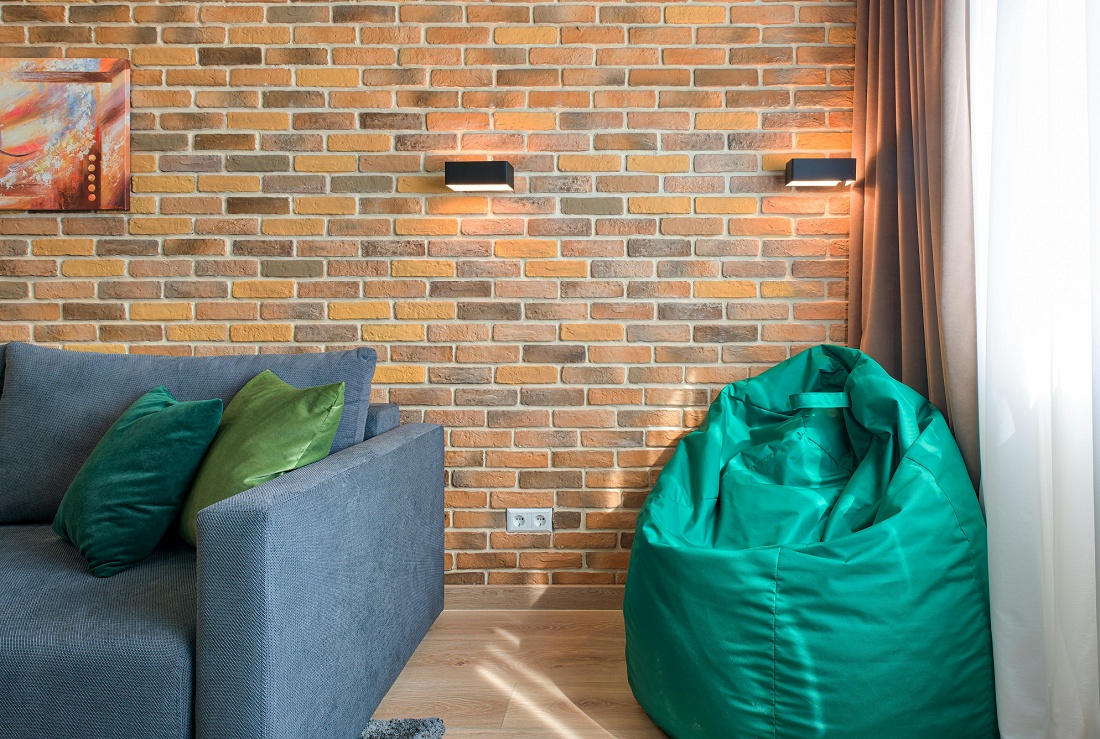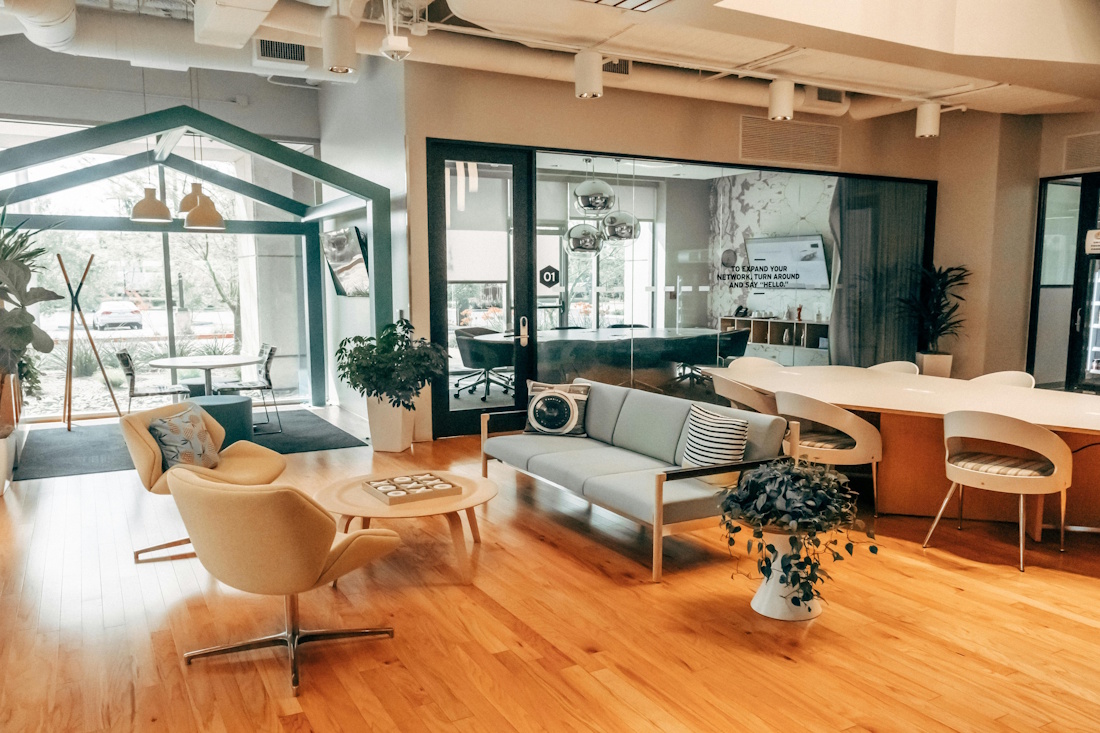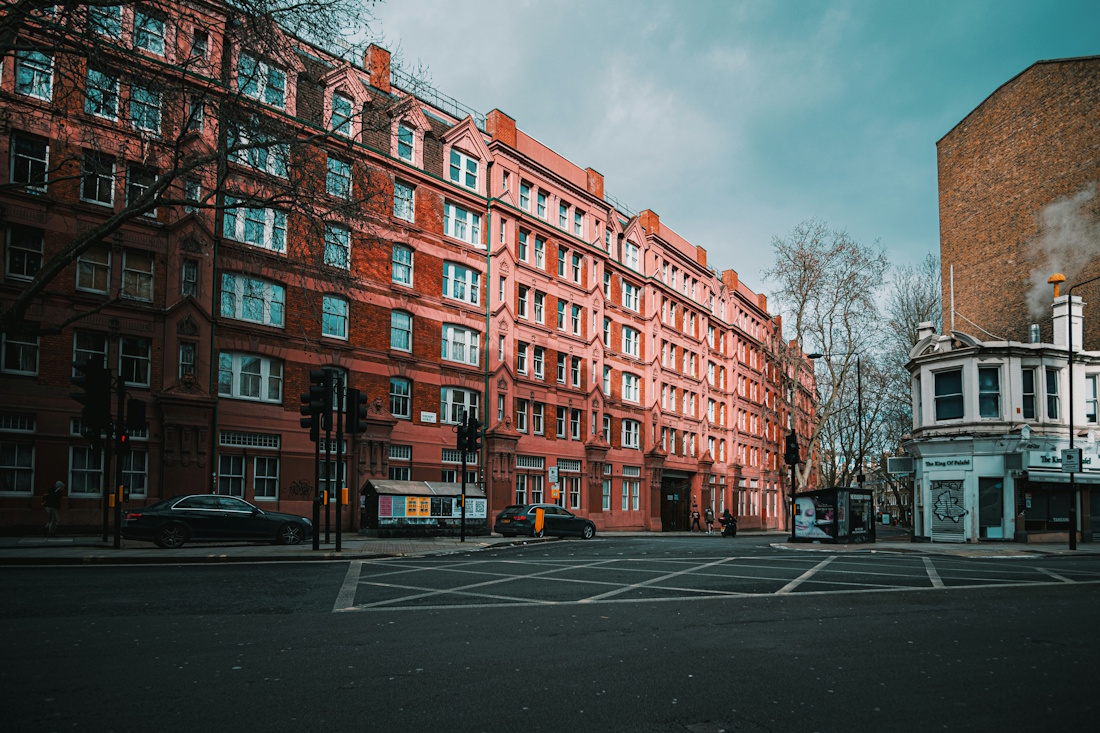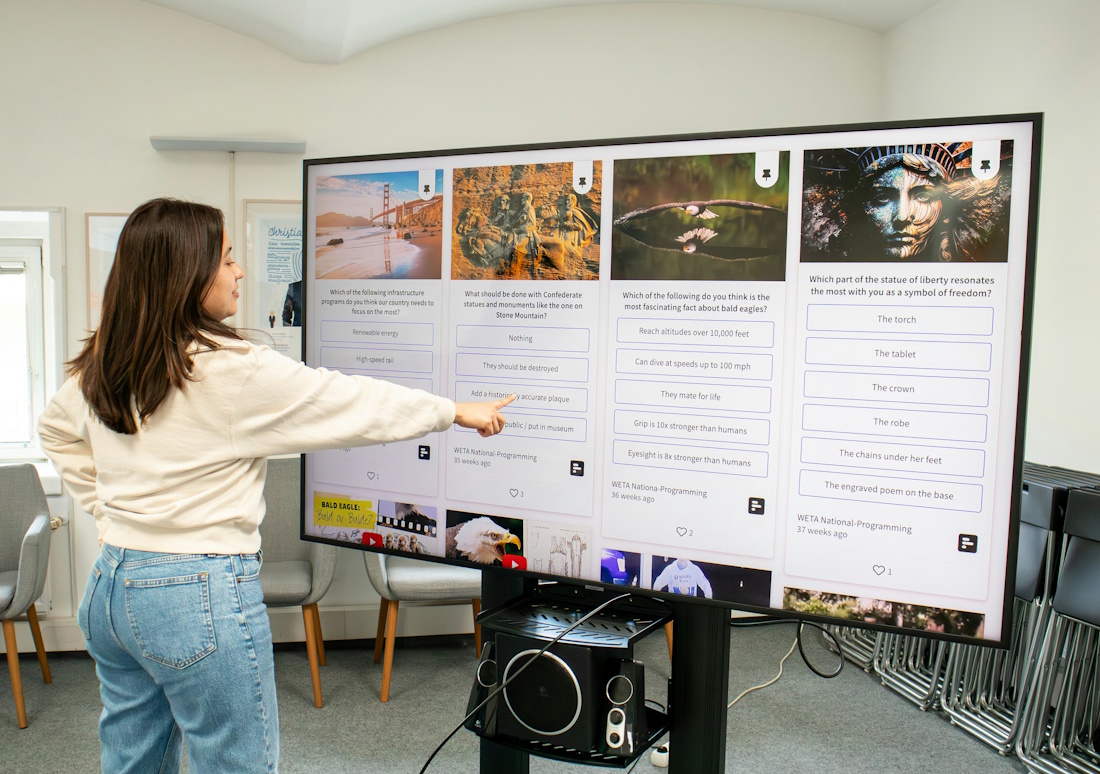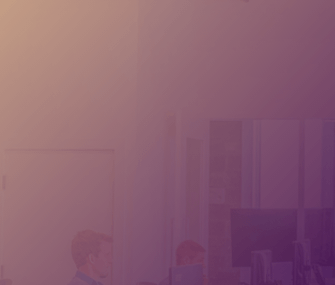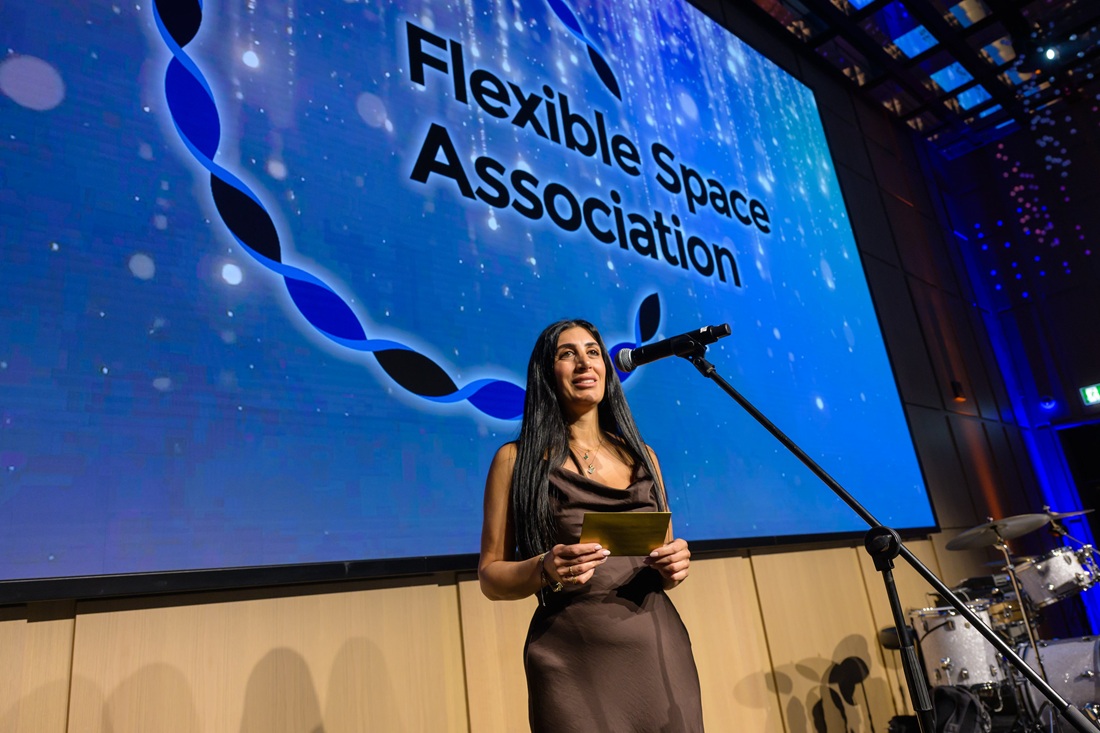What is a creative office space?
A creative office space is a workspace designed to boost collaboration and innovation. Visually, it’s a blend of modern and industrial style features, think exposed brick walls and ceilings with wooden flooring.
Key Features of Creative Workspaces
Most creative offices are found in converted warehouses or industrial buildings, providing a raw, open feel.
As with most office spaces, no two are the same. However, the following features are consistent throughout creative spaces:
• Exposed Ceilings, Brickwork & Wooden Flooring: Very common and provide a raw edge with a nod to the industrial history of most creative spaces.
• Open-plan Layouts: To enhance team visibility and promote transparency.
• Breakout Zones: Spaces for casual meetings or informal discussions.
• Natural Light & Biophilic Design: Integrated natural elements such as wood and plants.
• Art Installations: Sculptures, paintings or custom furnishings.
• Moveable Furniture: Desks and chairs which can be easily reconfigured.
• Integrated Technology: Technology such as presentation screens, video conferencing equipment, and superfast internet.
Benefits of a Creative Office
The benefits of a creative office reach far beyond the aesthetics. Based on feedback we’ve received from clients we’ve placed in creative workspaces, these are the most common benefits:
• Enhances Creativity and Collaboration: Teams working in a visually appealing office are more likely to experiment with new ideas. A creative design implies that innovation is welcomed.
• Strengthens Teams: Creative offices reflect a
company’s values and culture. When employees are connected to their workspace, they are naturally more connected to each other.
• Improves Recruitment: Creative offices help companies to stand out from the competition, appealing to top talent.
• Increases Employee Satisfaction: Natural light and greenery have been proven to improve mood and well-being. This, in turn, ensures employees are happier at work.
• More Flexible Layouts: The open-plan layouts and movable furniture within a creative workspace allow expanding teams to quickly adapt their office space without relocating.
• Boosts Brand Perception: Creative offices often leave a strong impression. The spaces reflect the company’s originality and energy, which is memorable to clients visiting.
• Encourages Different Working Styles: From brainstorming sessions in breakout zones to areas for focused tasks, creative workspaces support
a variety of working styles.
Creative Office Space vs. Traditional Offices
| |
Traditional Offices |
Creative Office Spaces |
| Function |
Formal set-up focused on order and structure.
|
Built to inspire and energise.
|
| Layout |
Rows of desks/cubicles with private meeting rooms and spaces.
|
Open-plan layouts and a mix of zones for private and collaborative work.
|
| Design |
Minimalist with neutral colours.
|
Bold and customised with a personal feel.
|
| Culture |
Formal and hierarchical. Can be seen as rigid.
|
Collaborative and centred around people.
|
| Flexibility |
Fixed layouts, harder to adapt to staffing levels.
|
Can evolve with team expansions.
|
Why Serviced Offices Are Ideal for Creative Teams
• No Setup Time: Serviced offices are a plug-and-play option. They are fully furnished, including internet and utilities. This saves time for companies, reducing the need to source furniture and set up an office.
• Pre-designed Spaces: Serviced office providers, especially in London, build spaces with creative teams in mind. Many serviced offices already include breakout zones, collaboration spaces and even podcast studios, so they may not require any customisation.
• Highly Flexible: Creative businesses often grow quickly and may require short-term contracts or room to expand within the same building, which serviced offices provide.
• Minimal Upfront Costs: Serviced offices only require the equivalent of 2-3 months’ rent (depending on the provider) upfront, which is significantly less than the
deposit for a traditional leased space.
• Fully Managed Buildings: Serviced offices are perfect for creative companies as they are managed by an on-site team. Whilst this is a general benefit of serviced offices, many creative teams told us how this has been crucial to their businesses as it allows them to focus solely on their ideas without breaking creative momentum.
Who uses creative offices?
Creative offices are commonly used by industries that require collaboration and the exchange of ideas. These include:
• Marketing and Advertising Agencies
• Media Production
• Publishing Companies
• Tech Startups
• Software Developers
• Fashion and Architecture Designers
However, we receive many enquiries from businesses outside these sectors, such as finance and consultancy firms. These organisations look for creative spaces to modernise their company culture and attract new talent.
Most Popular Areas for Creative Offices in London
Some areas in London have become synonymous with creative industries. Based on our enquiries, the most popular areas for creative offices are:
• Shoreditch: The centre of East London’s creative scene, home to all things tech, from startups to established companies like
Adobe.
• Camden: A hub for alternative fashion companies and music production businesses.
• Clerkenwell & Farringdon: These neighbouring areas have developed into a base for architects and interior designers.
• Soho: Popular with media and production companies, known for its vibrant buzz.
• Hackney: With an abundance of warehouse conversions, this is an upcoming area for creative office spaces.
Common Mistakes When Choosing a Creative Workspace
In our experience, businesses sometimes get carried away with the appearance of an office rather than its functionality. Here is our list of common mistakes to avoid:
Prioritising style over usability
A stylish, trendy office space is great but ensure it supports how your team operates.
Ignoring acoustics and sound levels
Open-plan layouts can be noisy. Enquire about
soundproofing and make sure that focus zones are located far from breakout spaces.
Forgetting about flexibility
Rapid expansions are common for creative teams, and your contract should reflect that. As mentioned, serviced offices offer the ultimate flexible contract should you need to expand.
Choosing location over practicality
Trendy postcodes certainly boost your business image. However, your office must be accessible for your staff and clients.
Overlooking tech infrastructure
If you have specific tech requirements, such as dedicated bandwidth or interactive whiteboards, ensure these can be fitted in the office. For interactive whiteboards, make sure there is enough space to use and read them effectively.
Overestimating the office space you need
Immediately choosing an office that is too big can result in paying for space that isn’t used. If you’re expecting to expand, opt for a serviced office which allows you to scale up gradually and save money.
Creative offices are more than just trendy spaces. They’re workspaces built to encourage collaboration, spark new ideas and reflect company identity.
We’ve seen how serviced offices are leading the way in offering plug-and-play spaces, especially in creative hubs like Shoreditch, Soho and Camden. If you’re looking for a creative
office space to rent in London, we can help you find a serviced option that suits your team.
